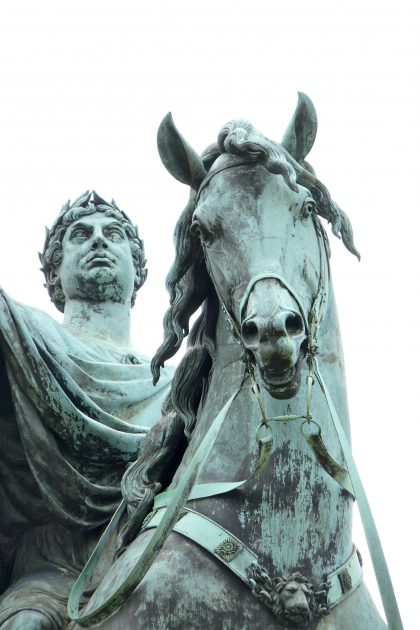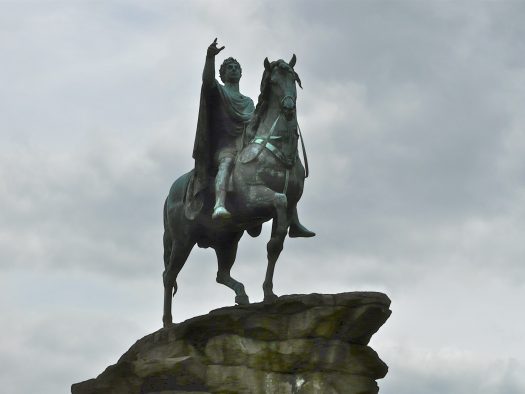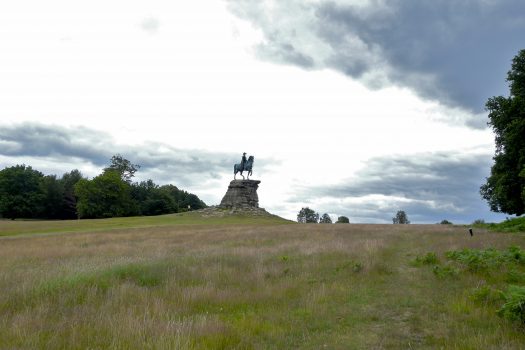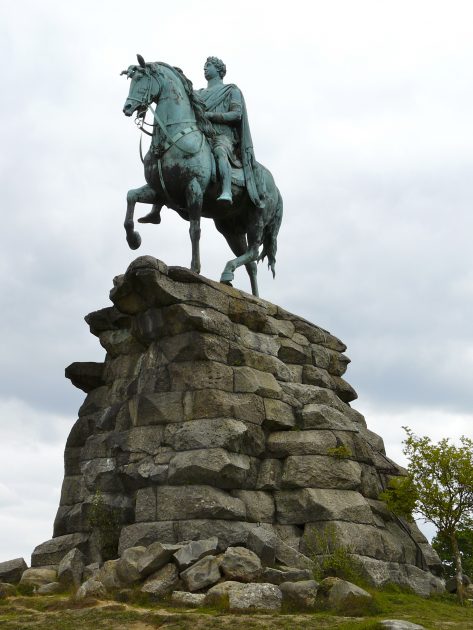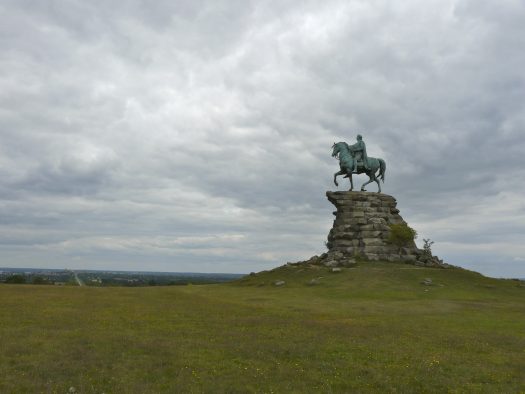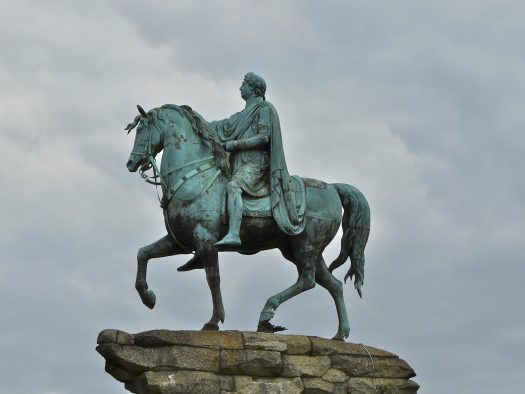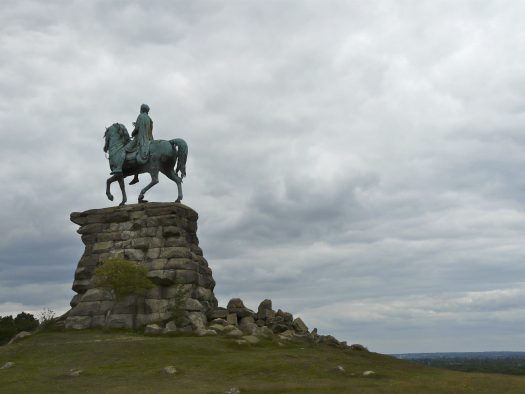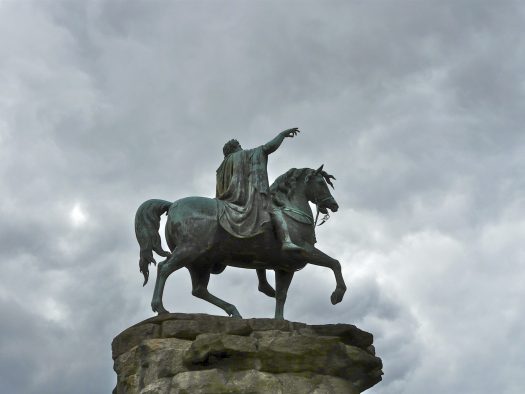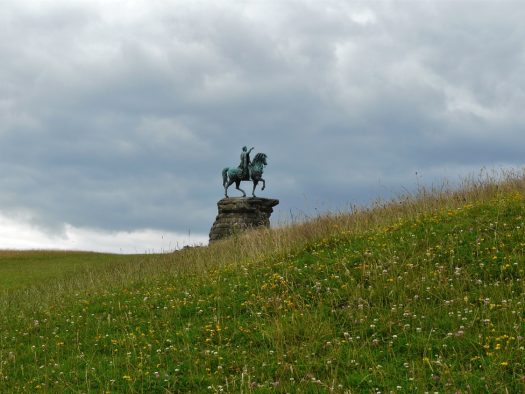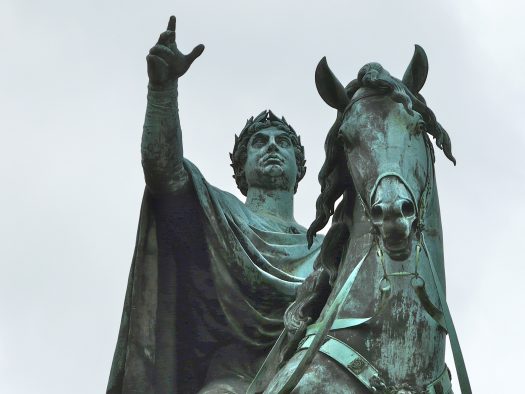- CountryUK
- Town:Windsor
-
Year of creation:1831
- Rider(s):George III
(1738–1820) was born in Britain and spoke English as his first language. Early in his reign, Great Britain defeated France in the Seven Years’ War, becoming the dominant European power in North America and India. However, many of its American colonies were soon lost in the American War of Independence. The populace of New York City destroyed his equestrian statue, dedicated there in 1770, shortly after the signing of the Declaration of Independence, six years later.
Since George III suffered from recurrent, and eventually permanent, mental illness in the later part of his life, he played a minor role in the wars against Napoleonic France.
- Sculptor(s):Westmacott, Richard
(1775 – 1856) was a British sculptor. He studied in Rome from 1793 until 1797 under Antonio Canova.
-
This monumental statue in Windsor ‘The Copper Horse’ has a lovely setting, overlooking the Long Walk in Windsor Great Park, through a calm and expansive landscape roamed by deer and pheasants, a pastoral idyll of the kind loved by the British monarchy and people alike. The statue commissioned by his son George IV bears an ironic inscription in Latin, which translates as: The best of fathers. Like so many father-son relationships in the Hanoverian family, George III and George IV were known to have despised one another.
